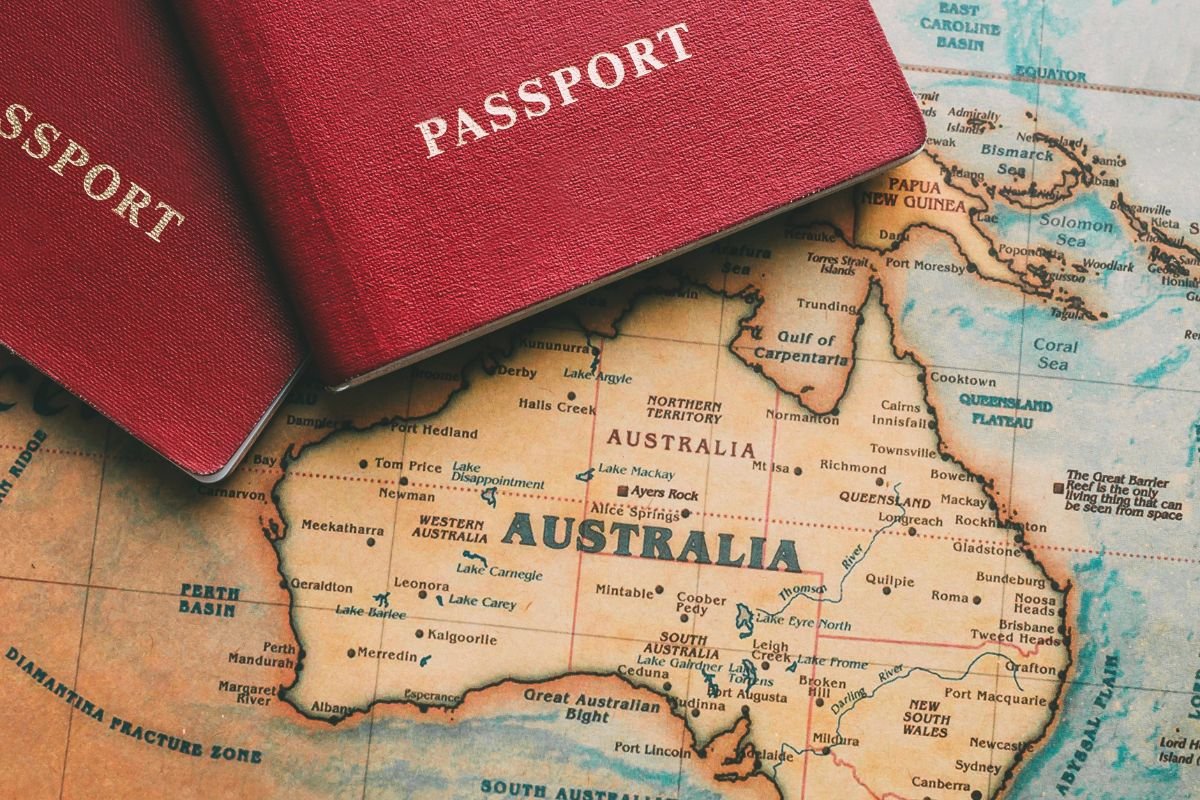Australia has long been a top destination for skilled workers seeking new opportunities and a better quality of life. With its robust economy, high standard of living, and welcoming attitude towards immigrants, the country offers numerous pathways for skilled professionals to make Australia their new home. One of the most popular routes is through the Australian Skilled Migration Visa, which allows individuals with the necessary skills, qualifications, and experience to live and work in Australia permanently.
This comprehensive guide will walk you through the entire application process for an Australian Skilled Migration Visa. Whether you’re a professional looking to advance your career or a recent graduate with skills in demand, this guide will help you navigate the complexities of the application process.
Understanding the Australian Skilled Migration Program
Before diving into the application process, it’s crucial to understand the Australian Skilled Migration Program. The program is designed to attract highly skilled individuals who can contribute to the Australian economy. It is points-based, meaning that applicants are assessed based on factors such as age, work experience, qualifications, and language proficiency. The higher your score, the better your chances of being invited to apply for a visa.
Types of Skilled Migration Visas
Australia offers several types of skilled migration visas, each catering to different circumstances:
- Skilled Independent Visa (Subclass 189): This visa is for skilled workers who are not sponsored by an employer, state, or territory. It allows you to live and work anywhere in Australia permanently.
- Skilled Nominated Visa (Subclass 190): This visa requires a nomination from an Australian state or territory government. It also provides permanent residency, but you must live and work in the nominating state or territory for a certain period.
- Skilled Work Regional (Provisional) Visa (Subclass 491): This visa is for skilled workers willing to live and work in regional Australia. It is a provisional visa that can lead to permanent residency.
Eligibility Requirements
To apply for any of the above visas, you must meet specific eligibility requirements:
- Occupation: Your occupation must be on the relevant Skilled Occupation List (SOL) for the visa subclass you are applying for. The SOL lists occupations that are in demand in Australia.
- Skills Assessment: You must obtain a positive skills assessment for your occupation from the relevant assessing authority. This assessment verifies that your qualifications and work experience meet Australian standards.
- Points Test: You must score at least 65 points on the Australian points test. Points are awarded based on factors such as age, English language proficiency, skilled employment, educational qualifications, and other criteria.
- English Language Proficiency: You must demonstrate a certain level of English proficiency, typically through an approved English language test such as IELTS, PTE, or TOEFL.
- Age: You must be under 45 years old at the time of invitation.
- Health and Character Requirements: You must meet specific health and character requirements. This usually involves undergoing a medical examination and providing police clearance certificates.
Step 1: Assess Your Eligibility
The first step in applying for an Australian Skilled Migration Visa is to assess your eligibility. This involves understanding the visa options available to you, checking if your occupation is on the SOL, and calculating your points.
Occupation List
Start by checking if your occupation is listed on the Skilled Occupation List relevant to the visa subclass you’re interested in. The SOL is regularly updated based on Australia’s labor market needs, so it’s essential to refer to the latest list.
Points Test
Next, use the points calculator provided by the Department of Home Affairs to estimate your points. To pass, you need a minimum of 65 points, but higher scores increase your chances of receiving an invitation to apply.
Skills Assessment
If your occupation is on the SOL, the next step is to undergo a skills assessment. Each occupation has a designated assessing authority responsible for evaluating your qualifications and work experience. Research the requirements for your occupation and submit your documents to the relevant authority for assessment.
Step 2: Take an English Language Test
English proficiency is a critical component of the points test. You must demonstrate your language ability through an approved test such as IELTS, PTE, or TOEFL. The higher your score, the more points you can claim.
Preparing for the Test
- Study Materials: Utilize study guides, practice tests, and language courses to prepare for the exam.
- Practice Regularly: Consistent practice improves your language skills and confidence.
- Understand the Test Format: Familiarize yourself with the test format, including the types of questions and time limits.
Test Results
Ensure that your test results meet the minimum requirements for the visa subclass you’re applying for. If your scores are not satisfactory, consider retaking the test to improve your chances.
Step 3: Submit an Expression of Interest (EOI)
Once you’ve confirmed your eligibility and obtained the necessary documents, the next step is to submit an Expression of Interest (EOI) through the SkillSelect system. The EOI is not a visa application but rather a way to express your interest in applying for a skilled visa.
Creating an EOI
- SkillSelect Account: Create an account on SkillSelect, the Australian Government’s online system for managing skilled visa applications.
- Completing the EOI: Provide details about your skills, work experience, education, and other relevant information. Make sure all information is accurate and up to date.
- Selecting Visa Subclasses: Choose the visa subclasses you wish to be considered for, based on your eligibility.
Receiving an Invitation
After submitting your EOI, you’ll be placed in a pool of candidates. Invitations are issued regularly to applicants with the highest points scores. If you’re invited to apply, you’ll have 60 days to submit a formal visa application.
Step 4: Gather Supporting Documents
If you receive an invitation to apply, you’ll need to gather and submit a range of supporting documents. These documents verify the information provided in your EOI and demonstrate that you meet the visa requirements.
Key Documents
- Identity Documents: Passport, birth certificate, and other forms of identification.
- Skills Assessment: A copy of your positive skills assessment result.
- English Language Test Results: A copy of your English test results.
- Educational Qualifications: Diplomas, degrees, and transcripts.
- Work Experience: Reference letters, payslips, and employment contracts to prove your work history.
- Health and Character Documents: Medical examination reports and police clearance certificates.
Step 5: Submit Your Visa Application
With all your documents in order, it’s time to submit your visa application. The application is completed online through the Department of Home Affairs’ ImmiAccount system.
Application Process
- ImmiAccount: Create or log into your ImmiAccount to start your application.
- Complete the Application: Fill in all required fields, ensuring that the information matches what you provided in your EOI.
- Upload Documents: Upload all supporting documents in the correct format.
- Pay the Visa Fee: The application fee varies depending on the visa subclass. Ensure you pay the correct amount.
Step 6: Await a Decision
After submitting your application, you’ll need to wait for a decision from the Department of Home Affairs. Processing times vary depending on the visa subclass, the complexity of your application, and the volume of applications being processed.
What to Expect
- Bridging Visa: If you’re applying from within Australia, you may be granted a Bridging Visa, allowing you to remain in the country while your application is processed.
- Request for More Information: The Department may contact you for additional information or documents. Respond promptly to avoid delays.
- Health and Character Checks: You may be required to undergo health examinations or provide additional police certificates.
Step 7: Receive Your Visa
If your application is successful, you’ll receive a visa grant notification. This document will outline the conditions of your visa, including your visa grant number, the date your visa starts, and any conditions you must comply with.
Traveling to Australia
Once your visa is granted, you can make arrangements to move to Australia. If you’re outside Australia, you must enter the country before a specified date, known as the first entry date.
Post-Visa Responsibilities
- Visa Conditions: Comply with any conditions attached to your visa, such as living in a specific state or working in a particular occupation.
- Permanent Residency: As a skilled migrant, you’ll be granted permanent residency, allowing you to live and work in Australia indefinitely. After meeting residency requirements, you may be eligible to apply for Australian citizenship.
Common Challenges and How to Overcome Them
Meeting the Points Requirement
One of the most significant challenges applicants face is meeting the minimum points requirement. If your initial points score is low, consider the following strategies:
- Improve English Language Scores: Retake the English language test to achieve a higher score.
- Gain More Work Experience: Additional work experience in your nominated occupation can increase your points.
- State or Territory Nomination: Apply for a Skilled Nominated Visa (Subclass 190), which can provide extra points.
Skills Assessment Delays
Skills assessments can take time, and delays can occur if the assessing authority requires additional information. To avoid delays:
- Submit Complete Documentation: Ensure all required documents are accurate and complete.
- Communicate with the Assessing Authority: Keep in touch with the assessing authority and respond promptly to any requests.
Health and Character Requirements
Meeting health and character requirements can be another hurdle. Be proactive by:
- Scheduling Health Examinations Early: Book your medical appointments as soon as possible to avoid delays.
- Obtaining Police Certificates: Gather police clearance certificates from all countries you’ve lived in for more than 12 months since turning 16. Ensure these certificates are up to date and cover the required periods.
Step 8: Settling in Australia
Once you’ve successfully obtained your Skilled Migration Visa and arrived in Australia, the next phase is settling into your new environment. This step involves adapting to Australian culture, finding accommodation, securing employment, and integrating into the community.
Finding Accommodation
One of the first things you’ll need to do upon arrival is to find suitable accommodation. Here are some tips:
- Research Housing Options: Depending on your budget and preferences, you can choose from various housing options such as renting an apartment, buying a house, or even sharing accommodation with others.
- Consider Proximity to Work: When selecting a place to live, consider the location’s proximity to your workplace or potential job opportunities.
- Understand Lease Agreements: If you’re renting, make sure you fully understand the terms of your lease agreement, including the duration, rent payment schedule, and any additional costs.
Securing Employment
While your Skilled Migration Visa allows you to work in Australia, securing a job may take some time. Here’s how to improve your chances:
- Update Your Resume: Tailor your resume to match Australian standards, highlighting your skills and experiences relevant to the job market.
- Network: Attend industry events, join professional associations, and connect with other professionals in your field. Networking is crucial in the Australian job market.
- Utilize Job Portals: Websites like Seek, Indeed, and LinkedIn are popular platforms for job hunting in Australia. Regularly check these sites for job openings in your field.
- Prepare for Interviews: Familiarize yourself with common Australian interview practices and questions. Practice your responses to ensure you present yourself confidently.
Adapting to Australian Culture
Australia is known for its diverse and inclusive society. As a new resident, you’ll find it helpful to:
- Learn About Local Customs: Understanding Australian customs and etiquette can help you integrate more smoothly. For example, Australians value punctuality, friendliness, and direct communication.
- Explore the Community: Get involved in local activities and community events. This is a great way to meet new people and feel more connected to your new environment.
- Understand Australian Laws: Familiarize yourself with Australian laws, especially those related to employment, taxation, and social services.
Step 9: Pathways to Australian Citizenship
As a permanent resident, you may eventually want to apply for Australian citizenship. Becoming a citizen provides additional benefits, such as the right to vote, access to government services, and the ability to apply for an Australian passport.
Eligibility for Citizenship
To be eligible for Australian citizenship, you must meet the following requirements:
- Residency: You must have lived in Australia for at least four years, including at least 12 months as a permanent resident.
- Good Character: You must be of good character, which involves passing a background check.
- Knowledge of Australia: You’ll need to pass a citizenship test that assesses your knowledge of Australia’s history, values, institutions, and symbols.
- Language Proficiency: You must demonstrate basic English language skills.
Applying for Citizenship
The citizenship application process involves several steps:
- Prepare Your Application: Gather the necessary documents, including proof of identity, residency, and good character.
- Submit Your Application: Apply online through the Department of Home Affairs’ website. You’ll need to pay a processing fee at the time of submission.
- Attend an Interview: If required, attend an interview where you’ll be asked questions about your application and knowledge of Australia.
- Take the Citizenship Test: If you’re between 18 and 59 years old, you’ll need to take the citizenship test.
- Attend the Citizenship Ceremony: If your application is approved, you’ll be invited to attend a citizenship ceremony where you’ll make the Australian Citizenship Pledge.
Conclusion
Applying for an Australian Skilled Migration Visa is a complex and detailed process that requires careful planning and preparation. By following the step-by-step guide provided in this article, you can navigate the application process more effectively and increase your chances of success.
Australia offers immense opportunities for skilled workers, and obtaining a Skilled Migration Visa can be the first step towards building a new life in this vibrant and prosperous country. From understanding the eligibility requirements to settling in Australia and eventually applying for citizenship, each step is crucial in making your Australian dream a reality.
Whether you’re motivated by career growth, a better quality of life, or the chance to experience a new culture, Australia has something to offer everyone. With the right approach and determination, you can make a smooth transition and start enjoying all that Australia has to offer as a skilled migrant.
This guide has provided you with the essential information needed to start your journey, and with careful planning, you can navigate the complexities of the Australian immigration system successfully. Remember, staying informed and proactive throughout the process is key to achieving your goal of becoming an Australian permanent resident and, eventually, a citizen. Good luck!



